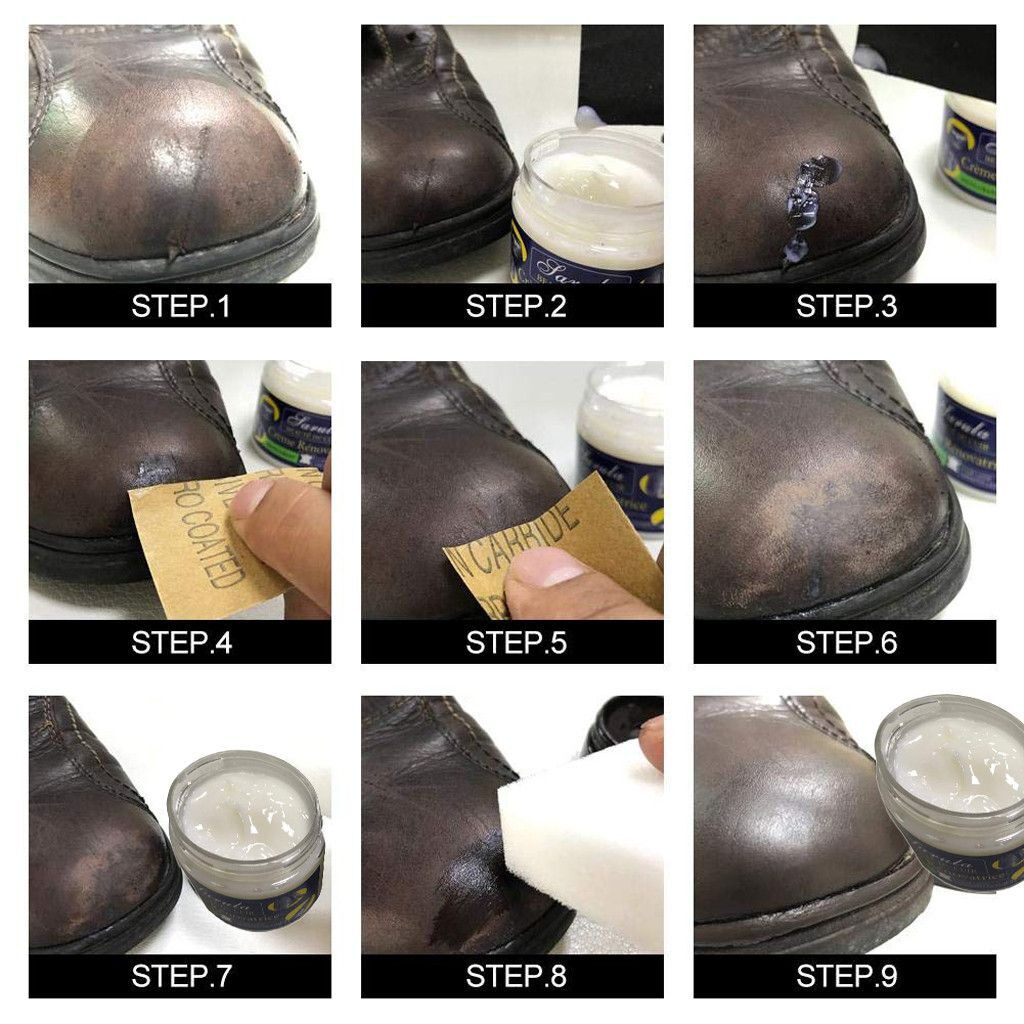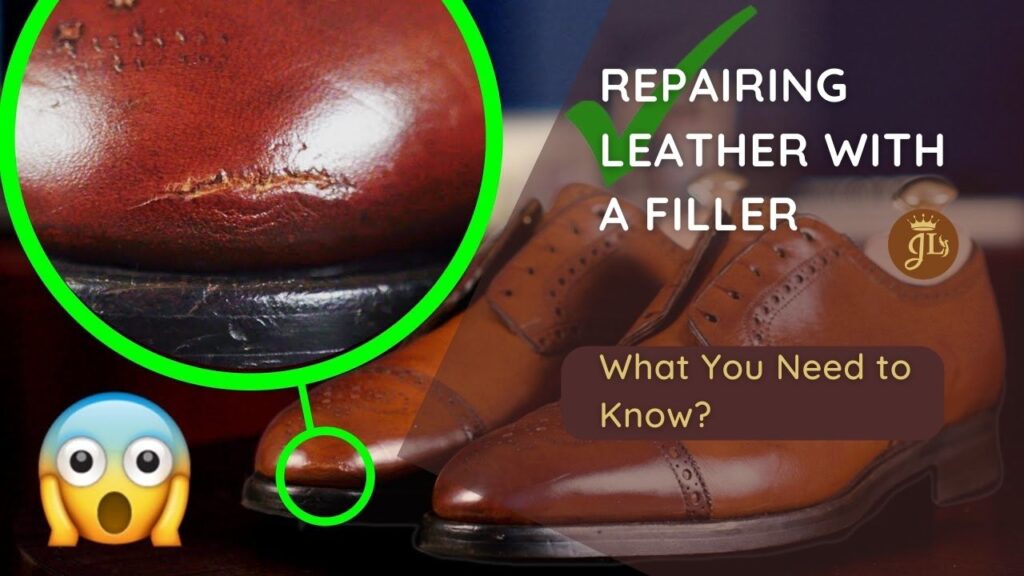There are a lot of things that go into the repair of leather items. The filler is used to mend them up from rips and tears to cracks. In most cases, repairing Leather with filler is much easier than trying to replace it altogether. This article breaks down all you need to know about repairing leather with a filler, so you can get started quickly!
What is a Leather Filler?
Leather is a natural material, but it can wear down over time. When the Leather shows signs of wear, you may need to repair it with a filler. Popular fillers for repairing Leather include silicone, jute, and beeswax.

Before you decide on a filler, you should determine what type of Leather your piece is made from. Silicone and beeswax are ideal for soft leathers, while jute is better for hard materials like cattle hide. You should also be aware while repairing leather with a filler that some fillers will work only on certain types of Leather; for instance, silicone will only work on suede. Once you have selected a filler and determined the kind of Leather it works best on, you need to gather the necessary supplies.
Types of Leather Filler
A few different types of leather filler can be used to fill excess holes and scars in leather goods. Common fillers include hair, foam, hot glue, silicone, and plastic. Here are more specifics on each:
1. Hair
Hair is the most common type of filler used for repairing Leather goods. It’s cheap, easy to use, and comes in many colors and textures. To use hair filler, you first must gather some hair from your head. Then, you’ll need a running gun (or a household object like a paintbrush) to apply the hair to the area you want to be filled. Be sure to avoid getting any hairs in the genuine Leather!

2. Foam
Foam is another popular type of filler for Leather goods. It’s very similar to hair filler in terms of how it’s used and what ingredients are needed, but it has some significant drawbacks. First, foam is quite dense and difficult to work with. Secondly, it doesn’t hold up well against wear and tear, so it may not be ideal for areas with a lot of use.
3. Hot Glue
Hot glue is another popular type of filler for repairing Leather goods. It’s fast and easy to use, but it only holds up as well as other filler options over time. Additionally, hot glue can be difficult to remove once it’s been applied – so care must be taken when using this method if you want your repairs to last long term.
4. Silicon
Silicone is a filler that’s becoming increasingly popular for Leather goods. It’s durable and easy to work with, but it can also be difficult to remove once applied. Additionally, silicone cannot be used in areas with a lot of wear and tear.
Plastic is a very uncommon type of filler used for repairing Leather goods. It’s relatively cheap, but because it’s made of plastic, it can be difficult to work with – and it won’t hold up well against wear and tear.
Pros and Cons of Filler
There are a few advantages and disadvantages of using a filler on Leather. The advantage of using a filler is that it repairs the Leather without replacing the entire piece. The disadvantage to using a filler is that it can be expensive, and there may be better choices for areas that are highly used or susceptible to damage.
Before repairing leather with a filler It is important to choose the right one. In general, there are three types of fillers used in leather repair: acrylic, urethane, and silicone. Each has its own advantages and disadvantages. Acrylic fillers are generally less expensive than urethane or silicone fillers, but they do not hold up as well as urethane or silicone in humid conditions or when subjected to UV light. Urethane fillers are generally more expensive than acrylic fillers, but they hold up better in humid conditions and under UV light. Silicone fillers are the most expensive option but last, the longest, and the strongest option available.
How to Properly Apply Filler?
Leather is durable, but it can eventually develop cracks and tears. When this happens, you can repair the damage with a filler. A filler is a type of adhesive that can fill in small holes or gaps in Leather. There are many types of fillers available on the market, so it’s essential to choose one that will match the condition of your Leather and will adhere well.

To apply filler successfully, you’ll need to follow these steps:
Step: 1
Prep the Leather before applying the filler by sanding down any rough areas or excess layers of skin. This will help reduce the chances of the adhesive sticking to underlying surfaces.
Step: 2
Clean and dry the area where you plan to apply the filler.
Step: 3
Apply a thin layer of filler onto the wet surface. Be patient; applicator tools can be temperamental when adhering liquid adhesive to cloth surfaces. Follow manufacturer instructions for application time and dosage rates. Do not overfill or allow too much adhesive to seep into seams or crevices; this could lead to structural failure later on. Allow enough time for complete drying before using the item as usual.
Step: 4
If desired, spritz with water or silicone after application to further enhance bond strength and prevent staining or discoloration from colored fillers
Repairing Leather with a Filler
Leather is a natural material, but it can degrade over time. If the Leather becomes cracked or brittle, you may need to repair it with a filler. Many types of fillers are available, so it’s essential to choose the right one for your needs.
Here are some factors you’ll want to consider when choosing a filler:
- Does the filler have a strong smell? Some fillers contain chemicals that can produce strong smells.
- Is the filler waterproof? Many fillers are water-resistant but need to be waterproof. You should seal the area where the filler is being used with a sealant to ensure it stays dry.
- How long will it take for the filler to dry? Many fillers take several days or weeks to fully dry. Be sure to plan accordingly if you apply the filler in an area that will be exposed to moisture (like the inside of a leather jacket).
FAQs | Repairing Leather with a Filler
Q.1 Does leather repair filler work?
Yes, leather repair filler can help fix cracks, holes, and other damage in leather. It fills in the damaged spots and makes the leather look better.
Q.2 What is the best filler for leather?
The best filler depends on the type of leather and the damage, but commonly recommended fillers are ones that are flexible, durable, and easy to apply, like water-based fillers or those made specifically for leather.
Q.3 How to apply leather filler?
To apply leather filler, clean the damaged area first. Then, use a spatula or your fingers to spread the filler into the crack or hole. Smooth it out, let it dry, and then sand it if needed.
Q.4 How long does leather filler take to cure?
Leather filler usually takes a few hours to dry to the touch, but it may take 24 hours to fully cure and harden.
Q.5 Is leather filler flexible?
Yes, most leather fillers are designed to stay flexible so they move with the leather and don’t crack or peel off over time.
Q.6 How long do leather patches last?
Leather patches can last a long time, sometimes years, if they are properly applied and the leather is cared for. The patch’s durability depends on the type of leather and the conditions it’s exposed to.
Q.7 How do you soften leather fillers?
Leather fillers are usually soft when applied, but if they get too hard, you can soften them by adding a little water or rubbing them gently before applying.
Q.8 How long does filler take to dry?
Filler can take anywhere from 30 minutes to a few hours to dry, depending on the type and thickness of the filler. It’s best to follow the product instructions for drying times.
Conclusion | Repairing Leather with a Filler
If you’re looking to repair a tear or hole in your Leather, there are a few things you’ll need to know before getting started. This article outlines everything you need to know about repairing Leather with a filler, including what types of fillers are available and how to use them. We also provide tips for using filler on different types of Leather, as well as some advice on how to keep your repaired piece looking its best. Armed with this information, you’ll be able to Repair Leather the right way every time!
You might like : Leather Wrap Belt | Choosing the Perfect Belt

